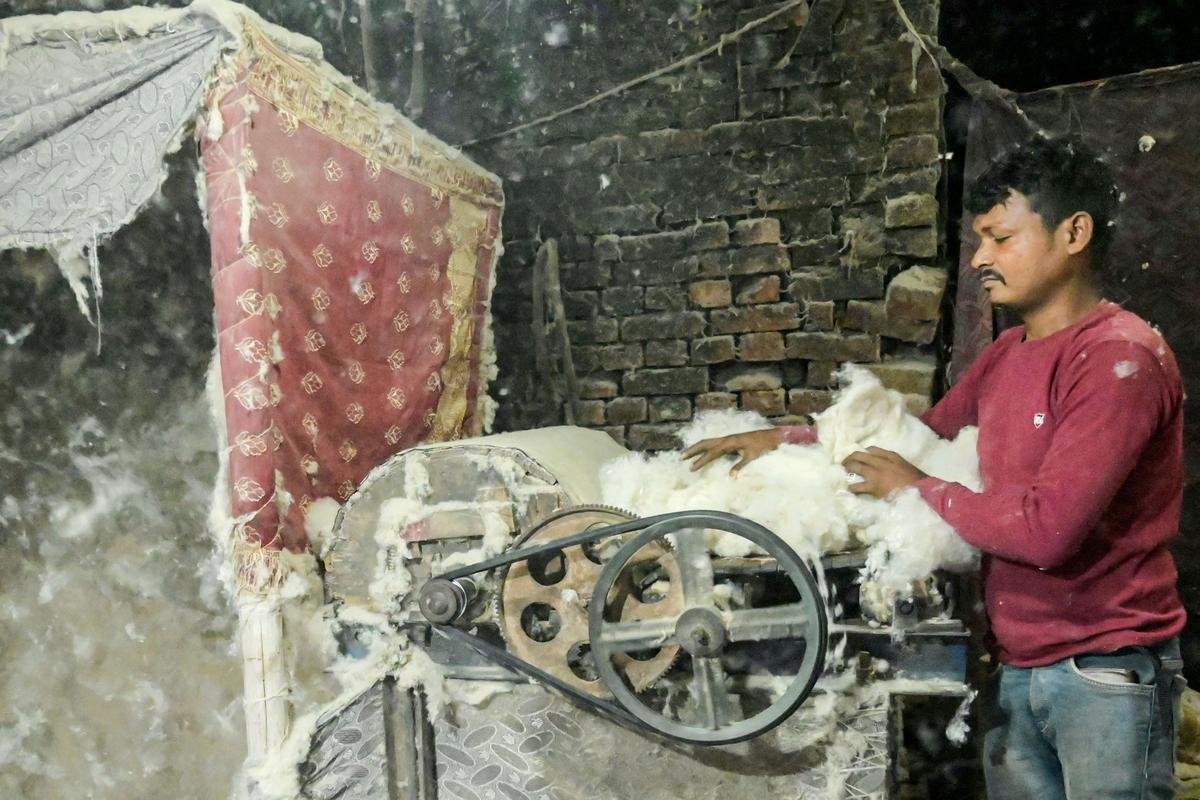Why in the News?
- In August 2025, the Central government suspended the 11% import duty on cotton till September 2025, to ease shortage of raw material for the textile industry.
- This comes at a time when domestic cotton production has fallen sharply to the lowest level in 15 years, and imports are rising steeply.
Key Highlights
- When and Why Duty was Introduced (2021)
- In February 2021, an 11% import duty was imposed because India was producing more cotton (350 lakh bales) than required (335 lakh bales).
- The aim was to protect farmers since India was exporting cotton while also importing some.
- Temporary Relaxation (2022)
- In April 2022, the duty was suspended till October 2022 because the textile industry started facing shortages.
- This allowed mills to import cotton at cheaper rates.
- Present Situation (2024–25 Season)
- Cotton production has dropped to 294 lakh bales, while the country needs about 318 lakh bales.
- Imports have gone up sharply – over 40 lakh bales expected this year, worth about $1.2 billion.
- Key suppliers are Australia, U.S., Brazil, and Egypt.
- Government and Market Actions
- The Cotton Corporation of India (CCI) has purchased nearly 100 lakh bales from farmers at MSP, spending ₹37,500 crore.
- Out of this, 73 lakh bales have been released to the market.
- For the next cotton season (2025–26), the government has raised MSP by 8% to encourage farmers to grow more cotton.
- Different Stakeholder Views
- Textile industry: happy with duty suspension as it reduces raw material cost and improves competitiveness in global markets.
- International brands: often demand cotton from specific origins, so duty-free imports help.
- Farmers’ groups: unhappy, saying frequent duty cuts discourage farmers and lower their income security.
Implications
- For Textile Industry
- Lower cost of imported cotton makes Indian garments more competitive in world markets.
- Helps exporters meet demand from global brands.
- For Farmers
- Duty cuts reduce market prices, which may discourage farmers from planting cotton in future.
- MSP hike may give some relief but uncertainty remains.
- For Trade and Imports
- Imports are rising fast, increasing dependence on foreign cotton.
- India’s foreign exchange outgo is also growing.
- For Government Finances
- Large MSP operations cost thousands of crores.
- If mills can buy cotton easily at low cost, government spending on MSP could be reduced.
- For Policy Stability
- Frequent changes in duty create confusion for both farmers and industry.
- A stable, seasonal policy (duty-free during lean season and protective duty during harvest) could benefit both sides.
Challenges and Way Forward
| Challenges | Why it Matters | Way Forward |
| Falling Production | Lowest in 15 years, leading to shortage | Improve seeds, irrigation, and pest control to raise yields |
| Unstable Import Duty Policy | Sudden changes hurt planning for farmers and mills | Fix a clear seasonal duty policy (e.g., suspend April–Sep each year) |
| Farmer Confidence | Duty cuts may reduce their interest in cotton farming | Provide steady MSP, procurement support, and extension services |
| Rising Imports | High import bills and dependence on few countries | Diversify sources and build domestic traceability |
| MSME Liquidity Issues | Small mills cannot stock cotton during harvest | Provide cheaper credit and working capital support |
Conclusion
The import duty was first introduced in 2021 to protect farmers when India had a cotton surplus. But today, with production falling to 294 lakh bales (against demand of 318 lakh bales), the duty has been suspended to support the textile industry. While this helps exporters in the short run, farmers fear it may hurt their incomes. A balanced and stable cotton policy, along with productivity improvements and financial support to mills, is needed for long-term sustainability.
| Ensure IAS Mains Question
Q. Cotton production in India has declined to its lowest level in 15 years, prompting the government to suspend the import duty on cotton. Discuss the implications of this move on farmers, the textile industry, and India’s trade policy. Suggest long-term measures for balancing farmer welfare with industrial competitiveness. (250 words) |
| Ensure IAS Prelims Question
Q. Consider the following statements regarding cotton in India: 1. Cotton is the main raw material for the textile industry and is grown by nearly six million farmers. 2. The Government of India first introduced an 11% import duty on cotton in 2021 to protect domestic growers. 3. India currently produces more cotton than it requires, leading to surplus exports. Which of the above statements is/are correct? b) 2 and 3 only c) 1 and 3 only d) 1, 2 and 3 Answer: a) 1 and 2 only Explanation: Statement 1 is correct: Cotton is indeed the primary raw material for India’s large textile and garment industry. Around six million farmers cultivate cotton across India, making it a key livelihood crop. Statement 2 is correct: In the 2021 Budget, Finance Minister Nirmala Sitharaman announced an 11% import duty on cotton. At that time, India was producing more cotton (350 lakh bales) than required (335 lakh bales), so the duty was meant to protect farmers’ income from cheaper imports. Statement 3 is incorrect: Presently, India’s cotton production has declined to around 294 lakh bales, which is below the requirement of about 318 lakh bales. This means India faces a shortfall, not a surplus, and therefore imports are increasing. |





